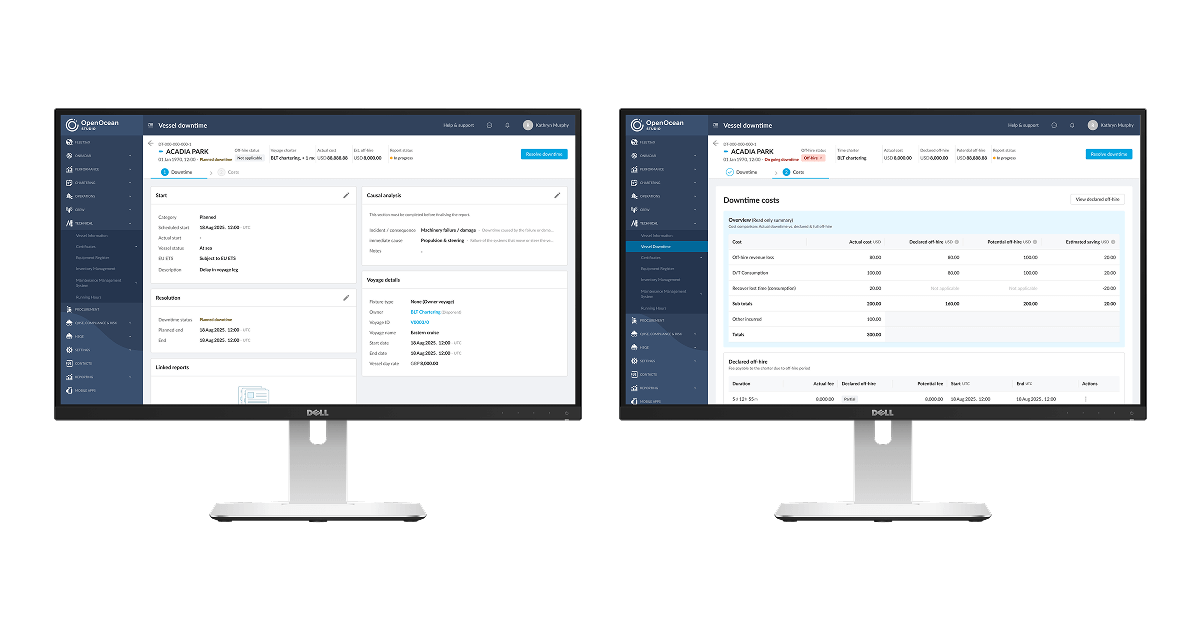Shadow IT' isn't a bug, it's a feature request
# What spreadsheets can teach us about maritime UX
If you’ve spent any time, like I have, immersed in the world of enterprise software, you will have seen the ritual. You’re sitting with a user, watching them work. They get to a certain point in their task, pause, and anxiously glance over their shoulder to check that no one is watching. And then, like a spy swapping secrets, they open it: the unofficial spreadsheet.
Because sometimes, manipulating data in that humble, illicit spreadsheet is just easier than grappling with the bespoke, multi-million-pound official system that doesn’t quite do what you need it to do.
In the hallowed halls of corporate IT, they have a name for this sort of thing. They call it "Shadow IT." It's a term delivered with a worried frown, as though they’ve just discovered a nest of spies in the server room. What it actually means is "people trying to do their jobs with tools that actually work." Banning it is like a restaurant owner getting angry that customers keep using the salt shaker.
A multi-million-pound argument about spreadsheets
To give you a maritime example: There are few phrases in shipping more terrifying than "vessel off-hire." When a ship breaks down, a klaxon goes off on shore. The Technical Superintendent needs to know what’s broken. The Operator needs to know when it will be fixed. And, most importantly, the Accountant needs to know how much money they are losing every single second.
And how do they manage this multi-million-pound crisis? With spreadsheets, of course.
But not one spreadsheet. That would be too simple. Each department has its own version. Technical has their version of the truth, operations has another, and accounts has a third, each tracking the downtime with slightly different formulas and data. The result is a weekly, soul-destroying reconciliation meeting where highly paid professionals argue for hours, not about how to fix the ship, but about whose spreadsheet is the "least wrong."
And why does this spreadsheet nightmare exist? Because the official system, the one they paid millions for, has failed them. It can't provide a single, trustworthy, real-time view of off-hire that serves all three departments at once. The data is fragmented and ambiguous, so our users simply cannot trust it. Each team has been forced to build their own "unofficial" source of truth just to do their job.
A masterclass in missing the point
Now, the typical corporate response to this is to try and ban the spreadsheets. To send out a stern memo about "unapproved software." This is the kind of thinking that is all so often detached from the actual hands-on realities of completing a task under pressure.
Those competing spreadsheets aren't a security risk. They are a beautifully detailed, user-generated feature request.
They are three different prototypes of the product we should have built. The intricate formulas, the specific data points each department cares about, the way they’ve structured their columns—every single element is a clue. It’s a treasure map that leads directly to a better product.
The same goes for the flurry of WhatsApp messages between a Crewing Manager and a Port Agent. That isn’t a compliance breach; it's a desperate plea for a real-time, context-aware communication tool that the official channels have failed to provide.
Pave the desire path
These workarounds are the desire lines of the digital world. They show you the path of least resistance your users will always take. You can either pave over them and force everyone to use your horribly designed official walkway, or you can have the humility to see where people are actually going and build a proper path.
"Those competing spreadsheets aren't a security risk. They are a beautifully detailed, user-generated feature request."
So, the job of a design leader isn't to stamp out Shadow IT. It's to hunt it down. To find every rogue spreadsheet, every unofficial WhatsApp group, and study them with the reverence of an archaeologist finding a lost scroll. Because in them, you will find the truth.
Your mission, then, is simple. Build a product so good, so intuitive, and so damn trustworthy that it makes the workaround redundant. Build something better than the spreadsheet.
It’s the hardest thing you’ll ever do.
Related case study
Killing the spreadsheet that cost a fortune
A deep dive into how I redesigned a failing feature, turning it into an intelligent tool that stops revenue leakage and provides genuine business insight.



